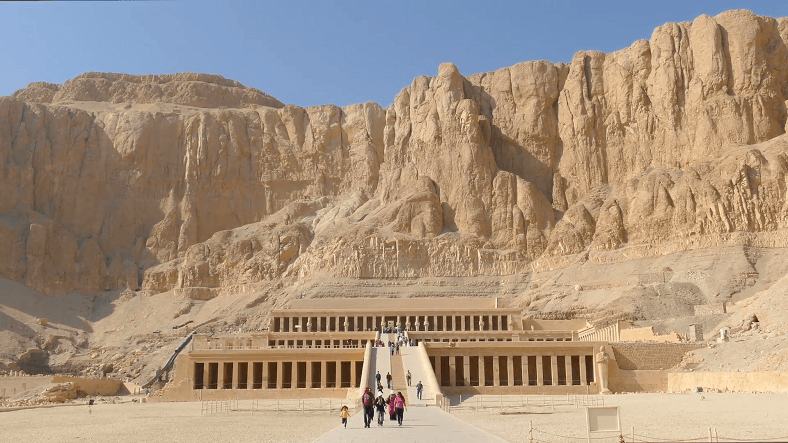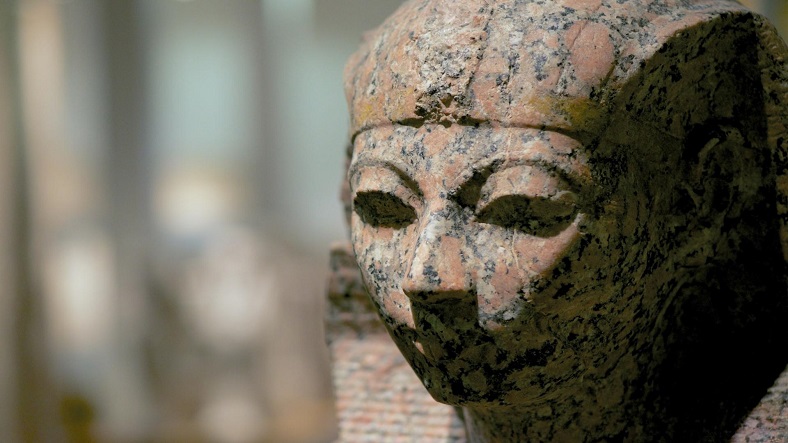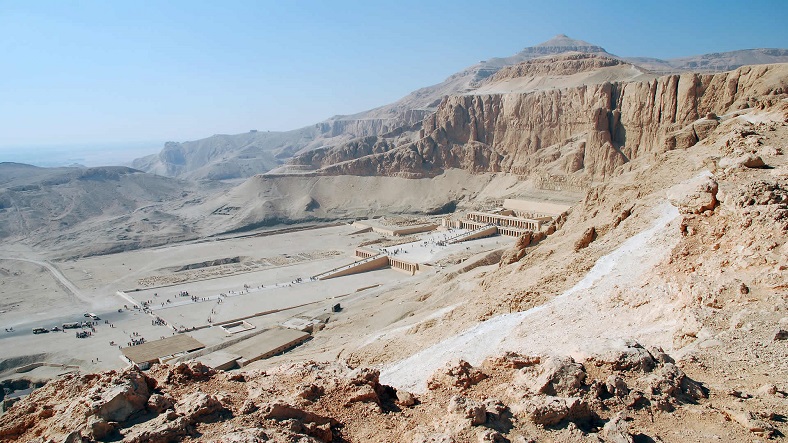Temple of Hatshepsut is one of the most honored architectural masterpieces in the world, but even more interesting is the woman who endeavors it.
Besides the striking cliffs of Deir el Bahri, the mortuary Temple of Hatshepsut reveals one of the most extraordinary reigns in Egyptian history.
History of Queen Hatshepsut
Hatshepsut was the eldest daughter of King Thutmose I. First undertook the role of queen regent during the 18th dynasty and after the death of her husband, Thutmose II. Although her stepson, Thutmose III was ready to take over but she chose the title of pharaoh and ruled for more than two decades.
Fun fact: She was one of the first female pharaohs of ancient Egypt.
Today, evidence of achievements of Hatshepsut can still be seen from Nubia to Beni Hasan. In Thebes, she started constructed towering obelisks and built roads in honor of Amun, king of the gods and patron of pharaohs. Her statues also developed, showcasing her with a male bodies in full pharaonic regalia. They included the traditional beard, shendyt kilt, and head cloth—a declaration of power.
Moreover, her mortuary temple was strategically placed on the west bank of the Nile River next to the Temple of Mentuhotep II to strengthen her position among kings.
Known as Djeser Djeseru, or “holy of holies,” her temple was decorated with scenarios from her reign. Further, to add to the beauty of the temple, it had shrines of Anubis, god of the dead; Hathor, goddess of fertility; Amun, king of gods; and Re, god of the sun.
Know other places to visit in Egypt:
Her death!
Unfortunately, Hatshepsut died in 1458 B.C.E. and was buried in the Valley of the Kings. Although she tried everything to be remembered after her death. But 20 years later, Thutmose III carried out a sweeping campaign to destroy her legacy.
He demolished her statues, defaced her images, and erased her cartouche. Some say it was an act of vengeance, others believe it was to ensure a smooth succession of his own son to the throne.
There is a third theory that that says he didn’t want the rule of kings—Thutmose I, II, and III—interrupted by a woman.
Finally, between 1923 and 1931, the Egyptian Expedition of the Metropolitan Museum of Art excavated some fragments. It had her destroyed statues, which were dumped into pits in front of the temple.
Whatever the reason was, Thutmose’s efforts were successful and Hatshepsut’s reign was slowly forgotten. When scholars decoded hieroglyphics in the early 19th century, they were finally able to read the inscriptions on her temple and piece the story together.
Today, her legacy lives in her living architectural achievements throughout Egypt.
What to See
Temple of Hatshepsut is just one of many archaeological wonders that make up Ancient Thebes with its Necropolis, a UNESCO World Heritage site. Descend into the beautifully painted tombs in the Valley of the Kings, wander the Karnak Temple Complex, and catch the sunset at the Temple of Luxor.
When to Go
The temple is open year-round from 9 a.m. to 5 p.m.—goes early in the morning to avoid high temperatures.
If you can handle the summer heat, go from May to September to avoid the masses. Otherwise, temperatures in winter are milder, but you may encounter high-season crowds.
Where to Stay
One of the best ways to see the sights is on a Nile River cruise. It takes you on a stress-free tour of the sights with an experienced Egyptologist. Else, you can also establish a home base at the historic Winter Palace Luxor or get off the beaten path at the boutique Beit Sabée near Medinet Habu.











Leave a Reply
You must be logged in to post a comment.